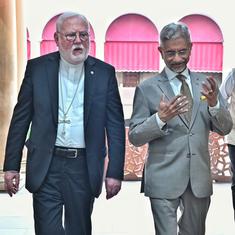It’s been more than a quarter of a century since Manmohan Singh pressed the switch on financial sector reforms, which have changed and (in many ways) undone a wobbly architecture that had been designed and erected in another era. Singh’s adoption of a twin-track reforms process – targeting industry and finance – was logical. If Indian industry had to be made productive and competitive, it needed access to an equally productive financial services sector which could efficiently allocate capital as well as provide a cost-effective pool for capital accumulation.
Interestingly, the reforms process has endured through different political regimes, even if it’s been somewhat episodic and haphazard in sequencing. The subsequent chapters explore the grand design or overarching strategy behind the financial sector reforms in India. It is this book’s thesis that even if there was indeed a master plan, many of the changes and reforms processes were induced by one or other crisis; and in areas where there were close to no crises or where scams affected people only marginally, reforms have remained half-hearted.
This book does not purport to be a laundry list of all the reform measures implemented in the past three decades, but attempts to examine some of the main reform measures in the financial sector to understand the external factors impacting the reforms impulse; it also tries to discern the kind of stimulus provided to financial sector reforms by the broader political economy.
The pace of reforms implementation has also witnessed its share of debate and dissent. In Montek Singh Ahluwalia’s paper for the Journal for Economic Perspectives in 2002, titled “Economic Reforms in India Since 1991: Has Gradualism Worked?”, he castigated the slow progress of economic reforms and India’s inability to extend the reforms ambit to other areas of the economy:
Critics often blame the delays in implementation and failure to act in certain areas to the choice of gradualism as a strategy. However, gradualism implies a clear definition of the goal and a deliberate choice of extending the time taken to reach it, to ease the pain of transition. This is not what happened in all areas. The goals were often indicated only as a broad direction, with the precise endpoint and the pace of transition left unstated to minimise opposition – and possibly also to allow room to retreat, if necessary. This reduced politically divisive controversy and enabled a consensus of sorts to evolve, but it also meant that the consensus at each point represented a compromise, with many interested groups joining only because they believed that reforms would not go “too far.” The result was a process of change that was not so much gradualist as fitful and opportunistic. Progress was made as and when politically feasible, but since the endpoint was not always clearly indicated, many participants were unclear about how much change would have to be accepted, and this may have led to less adjustment than was otherwise feasible.
The fourth volume of RBI History counters the impression of reforms being gradual:
On the issue of integrating the Indian financial markets with the global financial system, India has chosen to proceed cautiously and in a gradual manner, adjusting the pace of liberalisation with the underlying macroeconomic developments, the state of readiness of the domestic financial system and the dynamics of the international financial markets. This stand was not only because of its inherent preference for gradualism but also because of its recognition of the distinctive institutional and legal features.
Even C Rangarajan has refuted the allegation of gradualism about India’s financial sector reforms in Forks in the Road:
It took exactly six years to put through the reforms. It was this which helped the system to move smoothly to a new regulatory regime. The banking system had to work through a period in which changes were being made simultaneously in the monetary sector, exchange rate regime and in the regulatory and supervisory system. I do not think that the pace could have been accelerated without causing serious disruptions in the system.
In her influential paper Political Economy of Reforms, World Bank staffer Stuti Khemani outlines two conditions for successful reforms. One, reforms should be more beneficial and less costly than maintaining the status quo; therefore, calling any and every type of policy or institutional change a “reform” is “not consistent with how economics research examines reforms”. The second condition for successful reforms requires the existence of independent and non-partisan think tanks and research agencies that can provide non-ideological technical evidence to support reform measures. However, interest groups are often able to scupper the reforms process, even after the two conditions have been met, when they perceive the loss of future rents to be large.
Disinformation is often the weapon of choice to throw the reforms process off course, either by convincing actual beneficiaries of the reforms process that the entire exercise is not in their interest or by insinuating that the reforms process is inherently flawed, or influenced by external agents.
Financial sector reforms in India too experienced its share of disinformation campaigns. Opponents to the reforms process generated multiple strands of false narratives which also included the claim that reforms would inevitably lead to a greater number of scams. It is true that the spate of scams and frauds in the financial sector seems to have accelerated after the onset of financial sector reforms. But it is also true that scams inhabited the Indian financial sector even in the 1960s.
However, what additionally needs to be questioned is whether the higher frequency of scams post-1991 was due to reforms or due to some other reason. It is this book’s contention that the scams and scandals accelerated as a result of the political economy of reforms, the incomplete design of reforms and the close links between many financial-sector operatives and the political apparatus, notably through the instrument of campaign finance.
Another feature of the reforms blueprint – and this applies to all segments of the economy and not just the financial sector – seems to be the notable absence of a proper sequencing of reforms. In many sectors, the floodgates were thrown open before an independent regulator was established or before the setting of ground rules. This is evident from how SEBI, over the past decade, has had to continuously improvise and tighten the regulatory framework for trading in equity derivatives, given the unbridled speculation in that market segment which threatened to disrupt overall financial sector stability.
In many cases, regulators had serious capacity deficit issues. Consequently, this provided free rein to crony capitalists, scamsters, plutocrats and oligarchs, who played havoc with public trust and resources. The spectre of the political economy continues to loom large over reforms, in the form of resistance from the political class, which has been accustomed to a certain economic system, as well as in the form of obstacles erected by select economic agents (especially the Indian corporate sector) who had enjoyed privileged access to resources and markets because of distortions in India’s campaign finance system.
In an essay on the sequencing of reforms, economist Deena Khatkhate wrote: “The sequencing of financial reforms which take into account the institutional imperatives have a better chance to succeed.” Economist and former RBI deputy governor Rakesh Mohan argues that financial sector reforms in India were well-sequenced, while Montek S Ahluwalia has wondered whether “gradualism” slowed down their progress. Both are right, and both are also slightly off the mark: even within the financial sector, reforms in some segments, such as monetary policy, have been somewhat more methodical than in the rest.
Strangely, the arc of financial sector reforms takes a curious turn after 2014, with the Central government’s decisions demonstrating a certain random, ad hoc characteristic, such as the demonetisation episode. Economic reforms are generally pursued with the hope of improving the lives of citizens but the demonetisation episode, in contrast, visited hardships on a large section of the population by withdrawing 86 per cent of currency from the system overnight.
Another characteristic of financial sector reforms after 2014 is the marked emphasis on ensuring that financial sector players are not too inconvenienced or wanting for pathways to growth. However, one key trait remains unchanged from the beginning of financial sector reforms in the country, and that is the disproportionately large influence of crises or scams on reforms. The decisions taken during the post-2014 period once again seem to suggest the lack of a grand design or strategy for the reforms, but the strong influence of realpolitik on it. The relatively short time taken for the initial euphoria over the formation of an Insolvency and Bankruptcy Code to dissipate into cynicism indicates how a few interest groups with outsized political influence continue to skew the incentives for financial sector reforms.

Excerpted with permission from Slip, Stitch and Stumble: The Untold Story of India’s Financial Sector Reforms, Rajrishi Singhal, Penguin India.










